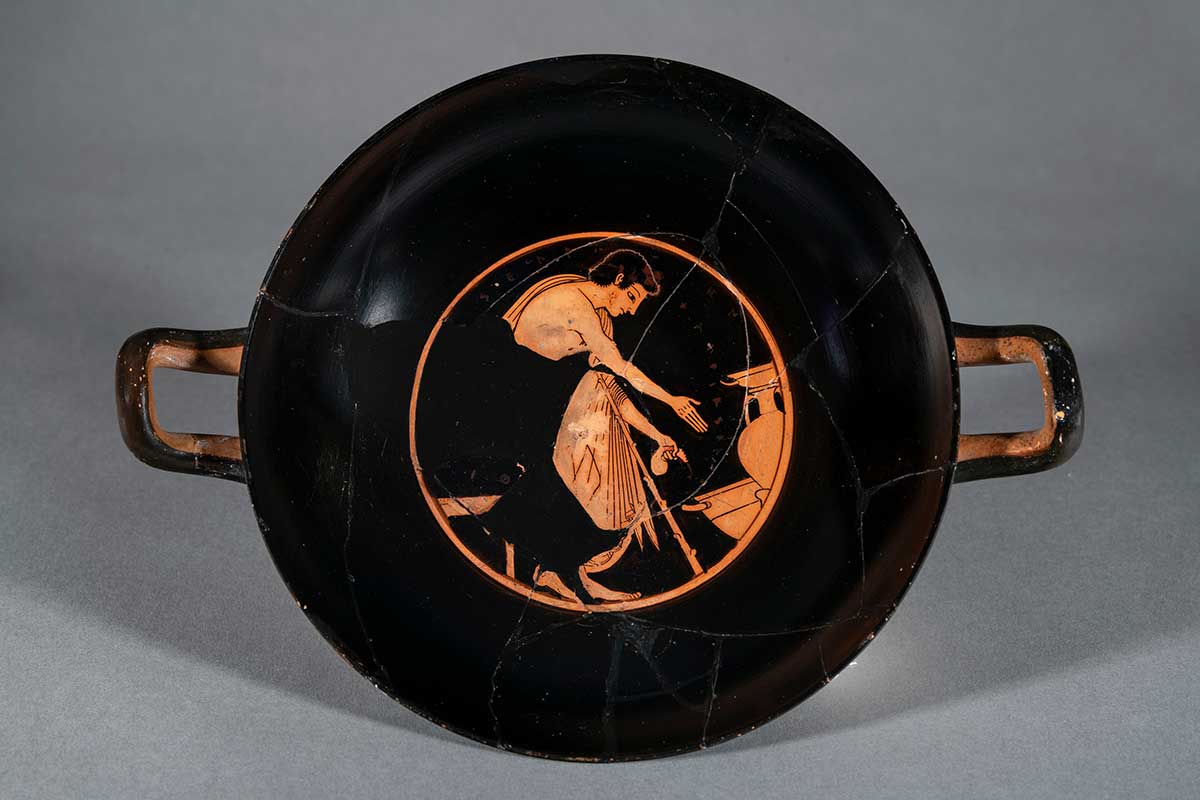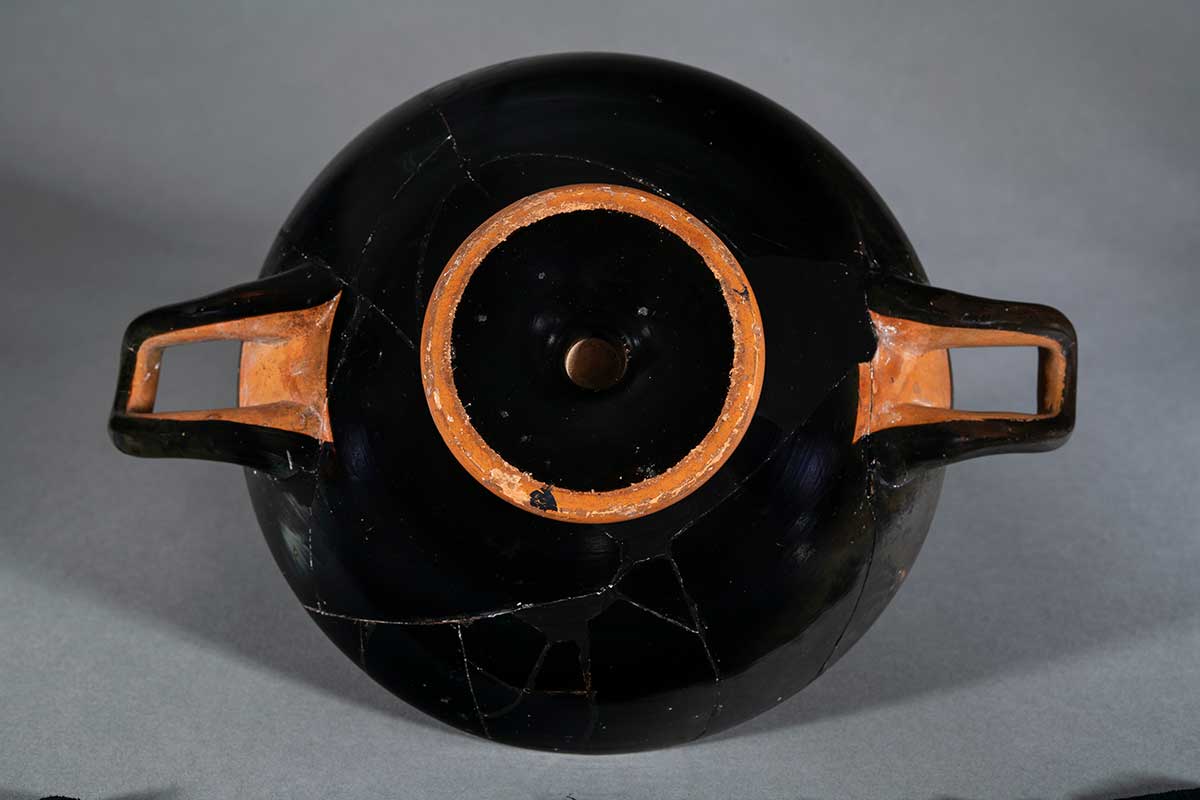Attic Red-Figure Vases
Kylix signed by Phintias as Painter
By Jessica Lamont

Measurements: Height: 7.3 cm, Diameter: 24.5 cm
Material: Ceramic
Date/Culture: Greek, 510 BCE
Provenance: The Baltimore Chapter of the Archaeological Institute of America
The scene on this drinking-cup explores the world of the potter, whose shop was bustling with activity. Inside, orange clay was thrown on the potter’s wheel, shaped into vessels of various types, fired in the kiln, decorated by a painter and, finally, displayed for sale. Our cup provides a glimpse of this last stage, underscoring the commercial purpose of pottery. Clasping his money purse, a customer inspects the pottery display, gesturing toward a kylix, an amphora set in a stand, and a large skyphos. He is in the bloom of youth, the beginnings of peach fuzz just visible on an otherwise smooth cheek. The wreathed youth, leaning on a walking stick, probably procures these vessels for a symposium. The artist thus underscores the importance of the craftsman to elite social practice. In order to host a symposium, the aristocrat needed the potter.

The inscription ( ΦΙΝ[ΤΙ]ΑΣ ΕΓΡΑΦΣΕΝ ) reveals that this cup was decorated by Phintias, an avant-garde vase painter of the late Archaic Period. This vase carries one of only seven signatures of Phintias, a member of the so-called ‘Pioneer Group.’ Working a decade after the invention of the red-figure technique, these artists experimented with foreshortening, the three-quarter pose, and the rendering of anatomy.